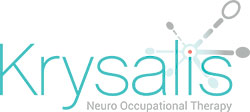Brain Anatomy – What are Chiari Malformations?

Chiari malformations (named after their discoverer, Austrian pathologist Hans Chiari) are structural defects in the base of the skull and cerebellum; the part of the brain that controls balance.
Normally the cerebellum and parts of the brain stem sit above an opening in the skull (the foramen magnum) that allows the spinal cord to pass through it.
But when part of the cerebellum extends below that opening into the upper spinal canal, it is called a Chiari malformation (CM).
Why do Chiari malformations occur?
CMs may develop when part of the skull is smaller than normal or misshapen, which forces the cerebellum to be pushed down into the foramen magnum and spinal canal.
This causes pressure on the cerebellum and brain stem that may affect the functions controlled by these areas and block the flow of cerebrospinal fluid (CSF), the clear liquid that surrounds and cushions the brain and spinal cord.
The CSF also circulates nutrients and chemicals filtered from the blood and removes waste products from the brain.
What are the causes of Chiari malformations?
Primary (congenital) CMs: these are the most common form caused mainly by structural defects in the brain and spinal cord during foetal development, as a result of genetic mutations or a maternal diet lacking certain vitamins or nutrients.
Secondary CMs: caused later in life if spinal fluid is drained excessively from the lumbar or thoracic areas of the spine either due to traumatic injury, disease, or infection.

What are the symptoms of Chiari malformations?
Some individuals with CMs may not show any symptoms. For others, headache is the tell-tale sign, especially after sudden coughing, sneezing, or straining. Other symptoms may include:
- neck pain
- hearing or balance problems
- muscle weakness or numbness
- dizziness
- difficulty swallowing or speaking
- vomiting
- ringing or buzzing in the ears (tinnitus)
- curvature of the spine (scoliosis)
- insomnia
- depression
- problems with hand coordination and fine motor skills
Diagnosing Chiari malformations
Diagnosing CMs can be difficult as the many possible symptoms can be associated with other conditions such as multiple sclerosis, fibromyalgia, chronic fatigue, lupus, migraines, carpal tunnel syndrome and ALS (also known as motor neurone or Lou Gehrig’s disease).
Misdiagnoses can also occur when initial symptoms are ascribed to stress or psychological conditions. These incorrect associations can result in critical delays in getting proper treatment.
Chiari malformations and autism
In children with Autism Spectrum Disorder (ASD), diagnosing CMs can be a challenging task. Symptoms may not be evaluated or managed as they may have been mistaken for those of ASD.
Adding to the confusion, recent studies show nearly a third of people with ASD also have epilepsy. However, there are limited studies on the connection between autism, epilepsy and CM. This is despite a behavioural symptom sometimes displayed by non-verbal children with these conditions; that of head banging, which can be an indicator of a spinal cord compression connected to CMs.
Written by Krysalis Neuro OT, Kelly Bristow

